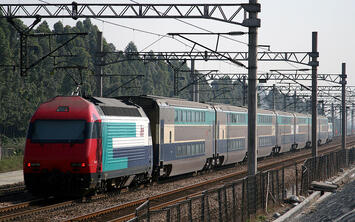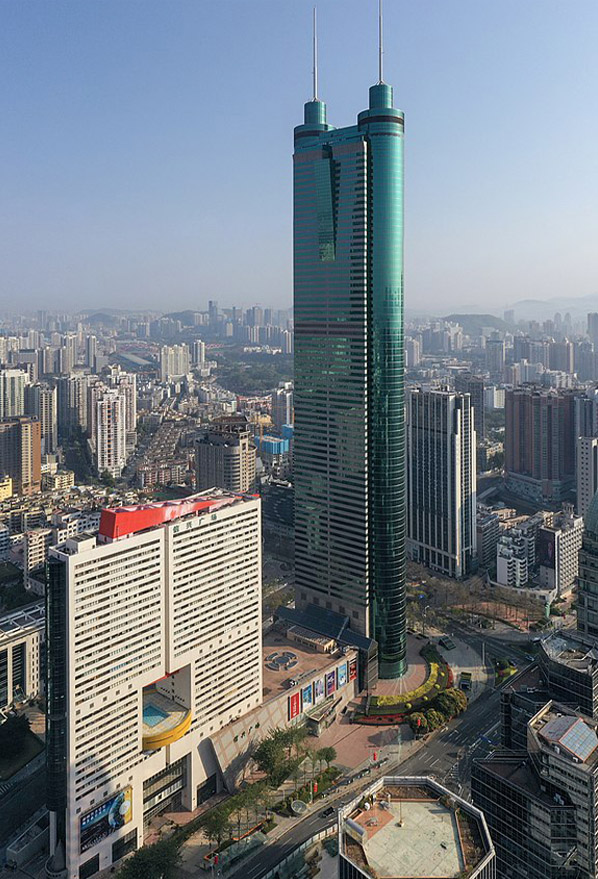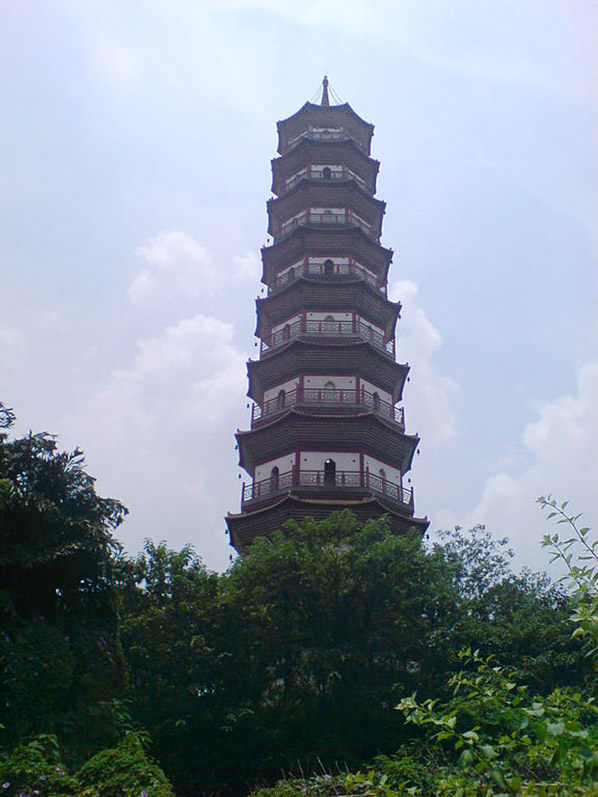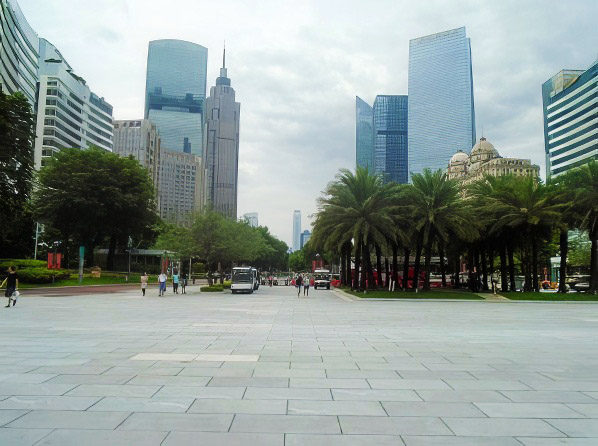
I was disappointed to read in the South China Morning Post that the legendary Kowloon-Canton Railway train from Hung Hom Station in Kowloon (Hong Kong) to Guangzhou East Station would not be restored following its pandemic suspension. The train made the 130 kilometer (80 mile) trip in about 1:40. The route is now being operated by a high speed rail train between the two terminals, though with a similar travel time, since the right of way is conventional, rather than high speed. The Kowloon-Canton train first operated over the complete route in 1911 and ran until 2020 except for from 1949 to 1979 (Canton is an alternative and historic name for Guangzhou).
I traveled round trip from Kowloon to Canton on the train in 1999. This was my first visit to China, and it was unplanned at least until landing in Hong Kong.
I was on my first round the world trip, on a flight from Johannesburg to the then new Hong Kong International Airport on Chek Lap Kok Island. I was to spend a few days in Hong Kong, and in Singapore, Tokyo and Osaka-Kobe-Kyoto.
I had a discussion with a Cathay Pacific flight attendant who sat across from me while landing. She told me that I could get a visa to visit China in a few hours at an office on Nathan Road. As soon as I heard that, I thought of taking the Kowloon-Canton train.
The next morning, the first thing I did was to go to Nathan Road and apply for the visa.
The journey of was, of course, interesting to this westerner on his first trip to the Orient. The route was through some of the densest areas in Hong Kong, which remains the densest major first world urban area on earth. The first stop was in Shenzhen, across the border in China.
At the first stop, Shenzhen, and off to the left I saw the unique Shun Hing Square, which was then the 8th tallest building in the world, and had recently been dethroned as China’s tallest building (photo). Shun Hing Square is also slightly taller than the Empire State Building.

Shun Hing Square, Shenzhen by Charlie Fong, CC 4.0 License
At this time, Shenzhen had a population of approximately six million and was already the fastest growing urban area in world history, having been only a fishing village when designated as a special economic zone two decades before. Now, Shenzhen has an estimated urban area population of 18 million.
Then we crossed the municipal border to Dongguan, which was to become the toy manufacturing capital of the world but at that point had a population of about six million residents. There were tall apartment towers in clusters. Particularly surprising was the design attractiveness of these buildings. They did not at all resemble the dreadful high-rises that I had seen in Leningrad (St. Petersburg), and Bratislava.
Dongguan has since grown to a population of more than 10 million, and is the largest urban area in the world without an international airport. Shenzhen-Boaon International Airport and Guangzhou’s Baiyun International Airports serve that function.
Eventually, the train pulled into Guangzhou East station and I exited through the south entrance. Across the Guangzhou East Station Square (a large park block), there was another surprise, , The CITIC Plaza, which had recently become China’s tallest building and was the 7th tallest in the world at the time.
I was approached by a tour guide offering me a taxicab tour of the city, a young man offering to give me a tour by taxi cab for $100. I thought that was a little steep, but having seen the extent of Guangzhou already on the train decided that I would probably see much more in my fairly quick visit to the city.
In 1999, Guangzhou and adjacent Foshan had approximately 15 million people, but today they constitute the Guangzhou-Foshan urban area, now the third largest in the world with a population of 27 million (after Tokyo-Yokohama, Jakarta and Delhi). The Guangzhou and Foshan subways now integrated service throughout the area.
Even in 1999, Guangzhou had a number of new skyscrapers and there was plenty of traffic.
We visited central area sites, such as the Chigang Pagoda (Photo) and the Sun Yat Sen Auditorium. To some extent I selected the route, asking him to have the driver take us by interesting buildings that I could see. It was here that I adopted my method for touring Chinese cities, by taxicab, and often without a shared language.

Chigang Pagoda by Kxx, CC 3.0 License
One distasteful site was a fabled wet market that I do not recommend a visit for a weak stomached Westerner. I survived, but had no interest in returning.
As the tour was coming to an end, the tour guide suggested lunch at a restaurant near the station. We ordered chicken and rice dish, which I ate virtually none of, not being accustomed to the chicken not having been boned. I am happy to say that in many later visits to China, the chicken has always been boned (Chinese food, especially from the small local stalls and restaurants that don’t taken credit cards is usually very good).
The trip back to Hong Kong was uneventful, but enjoyable because one always sees scenery missed one way on the return trip.
In 2018, I traveled on the new high speed rail link between Shenzhen and Guangzhou South, now the main station. The fastest train now on the route takes 46 minutes, but the station is located far from the Zhujiang New Town center, which has become the central business district. The subway travel time is about 30 minutes, while the travel time from Guangzhou East Station is about five minutes. However, Guangzhou-Foshan, like so many urban areas around the world is very decentralized. Both stations are well served by freeway and subway. The Guangzhou subway is rated by Wikipedia as the third longest in the world, behind Shanghai and Beijing and about 55% longer than New York, and it is the third most patronized, after the two combined Tokyo systems and Shanghai.

Zhujiang New Town, with Citic Plaza in the distance
Shortly after the service began (2018), I took the high speed rail from Shenzhen to Guangzhou South Station (Guangzhounan), which is the mainline high speed rail station in Guangzhou. The Guangzhou South area is already showing signs of emerging as another of the urban area’s “Edge Cities.” The route is much different from that of the Kowloon-Canton train. For the tourist, it would be best to travel one-way to or from Guangzhou East and the other way to or from Guangzhou South. The two routes are more than 20 kilometers (12 miles) apart in Dongguan. The scenery will be different, though the train experience will be more similar, now that the conventional trains will not operate.
Wendell Cox is principal of Demographia, an international public policy firm located in the St. Louis metropolitan area. He is a founding senior fellow at the Urban Reform Institute, Houston, a Senior Fellow with the Frontier Centre for Public Policy in Winnipeg and a member of the Advisory Board of the Center for Demographics and Policy at Chapman University in Orange, California. He has served as a visiting professor at the Conservatoire National des Arts et Metiers in Paris. His principal interests are economics, poverty alleviation, demographics, urban policy and transport. He is co-author of the annual Demographia International Housing Affordability Survey and author of Demographia World Urban Areas.
Mayor Tom Bradley appointed him to three terms on the Los Angeles County Transportation Commission (1977-1985) and Speaker of the House Newt Gingrich appointed him to the Amtrak Reform Council, to complete the unexpired term of New Jersey Governor Christine Todd Whitman (1999-2002). He is author of War on the Dream: How Anti-Sprawl Policy Threatens the Quality of Life and Toward More Prosperous Cities: A Framing Essay on Urban Areas, Transport, Planning and the Dimensions of Sustainability.
Photo: Kowloon-Canton conventional train via Wikimedia under CC 3.0 License












